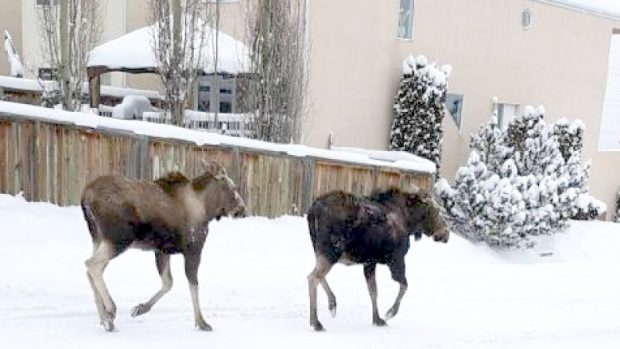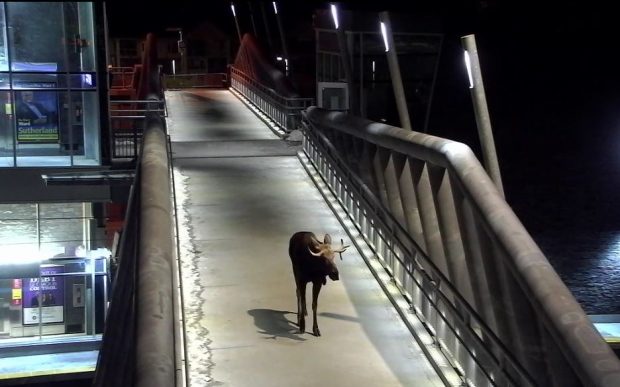
More and more in recent years, moose have been making their way onto the prairies in what biologist and author Chris Fisher calls an "opportunistic adaptation."
Normally found in the boreal forest and Rocky Mountains - where they usually spent the winter months feeding on trees and bushes - moose have moved in recent years as they seek out new and easier to acquire food sources.
"It's not unusual going for a drive that certainly we'll see a lot of pronghorn, elk and deer, but every now and again, you'll see a big old moose trotting along on the prairie where there's not a tree in sight," Fisher, the author of Mammals of Alberta, told the Calgary Eyeopener on Wednesday.
"They're very opportunistic. On the prairies ... there's a lot of grain that is spilled after harvesting so there is a lot of good food. For an animal that is used to eating splintered wood most of the winter, all this spilled grain and canola is like a Michelin five-star restaurant. It's a great banquet for them."
Moose even make their way into cities on occasion, including Calgary.
In early February, a pair of moose were spotted wandering around the neighbourhoods of Aspen Woods and Strathcona Park. Alberta Fish and Wildlife enforcement spokesperson Brendan Cox said it's best to give any wild animal a wide berth.
"If you don't have to walk in the direction where the moose is, then don't," he told CBC News in an earlier interview.
Another reason for moose movement, said Fisher, is the fact there's more room for them to move into as in many places the people have moved out.

"Back 100 years ago, there were homesteads all over the place, and the concentration of people has really been reduced," he said.
"Once, where you'd have an area that would have 40 people on it, now there might be a single family farming that entire area. So [moose] are not as disturbed as much. And these homesteaders have left behind a couple of trees where their house was ... or perhaps a willow bush, and that provides them a little bit of cover as well."
There's also a dearth of natural predators.
"Grizzlies and wolves that were on the prairies in previous centuries are now gone," Fisher said.
"Those would all have made life a little bit more difficult on the moose. Nowadays, you have the occasional hunter and road traffic - those would be the biggest threats."
Researchers have begun looking at the effects of moose migration, which Fisher says has so far been limited to "the periphery of the prairie."
"A single moose weighs as much as the entire offensive line of the Calgary Stampeders. They can chow down on a lot of food," he said.
"But it seems to be only concentrated on wheat and canola, and in areas that are closest to the forested areas. That's where you have more moose."



Reader Comments
For comparison, there is no red deer there apparently - only wild boars, roe deer, and presumably foxes (which I've never seen nearby, even though they are present in the city's centre). Oh, and a lone hare I saw last year. Roe deer imprint has usually 3-5 cm, red deer about 8-10 cm, while elk's is more sizeable, and until recently I haven't seen it in the wild.